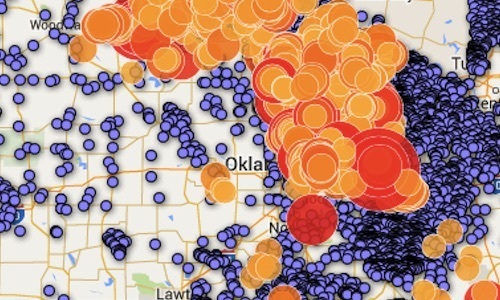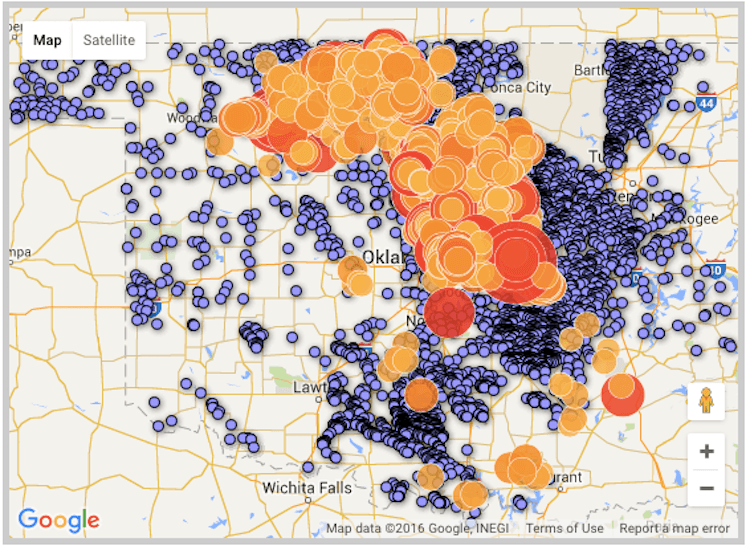
Lawsuit Filed Over Oklahoma’s ‘Fracking’ Earthquakes as Its Third Largest Quake Is Felt in 7 Other States

The Sierra Club and the public interest law firm Public Justice have filed a federal lawsuit Tuesday against three energy companies engaged in hydraulic fracturing, aka fracking, in Oklahoma.
The suit against New Dominion, Chesapeake Operating and Devon Energy Production Company alleges that wastewater from fracking and oil production have contributed to the state’s alarming spike in earthquake activity.

The lawsuit demands the companies, as a first step, to “reduce, immediately and substantially, the amounts of production waste they are injecting into the ground.”
The lawsuit was filed the same day that the Oklahoma Corporation Commission made their largest push yet to curb the state’s seismic activity. According to the Associated Press, the state’s oil and gas regulator ordered operators of nearly 250 injection wells to reduce the amount of wastewater they inject underground.
The commission released a plan that covers more than 5,200 square miles in northwest Oklahoma and called for a reduction of more than 500,000 barrels of wastewater daily, or about 40 percent less than previous levels, the AP reported.
The commission’s measure comes three days after a 5.1 magnitude earthquake shook northwest Oklahoma. Not only was the quake felt in seven other states, it’s the third-strongest temblor ever recorded in the state, the U.S. Geological Survey (USGS) said.
“Without knowing more specifics about the wastewater injection and oil and gas production in this area, the USGS cannot conclude whether or not this particular earthquake was caused by industrial-related, human activities,” the agency said. “However, we do know that many earthquakes in the area have been triggered by wastewater fluid injection.”

The Sooner State has gone from two earthquakes a year before 2009 to two a day, making it the earthquake capital of the world.
In 2014, seismologists reported more than 5,000 earthquakes in Oklahoma. In 2015, the state experienced 907 quakes of magnitude 3.0 or greater. “The earthquakes are continuing in 2016,” the suit states, noting that “Oklahoma City residents were awakened on January 1 with a 4.1 magnitude earthquake. Six days later, 4.3 and 4.8 magnitude earthquakes occurred back-to-back. [The state] has had 131 earthquakes from January 1 through 16, 2016, ranging from 2.01 to 4.8.”
Scientists concluded in April 2015 that the injection of wastewater byproducts into deep underground disposal wells from fracking operations have triggered the near-daily quakes.
The Tulsa World examined a recent Oklahoma Geological Survey study, which found an 81 percent jump from 2009 to 2014 in wastewater volumes pumped back underground from oil and gas activities, in which wastewater volumes skyrocketed to 1.538 billion barrels in 2014 from 849 million in 2009. The rise coincides with the state’s leap in seismicity, Tulsa World observed.

 233k
233k  41k
41k  Subscribe
Subscribe 